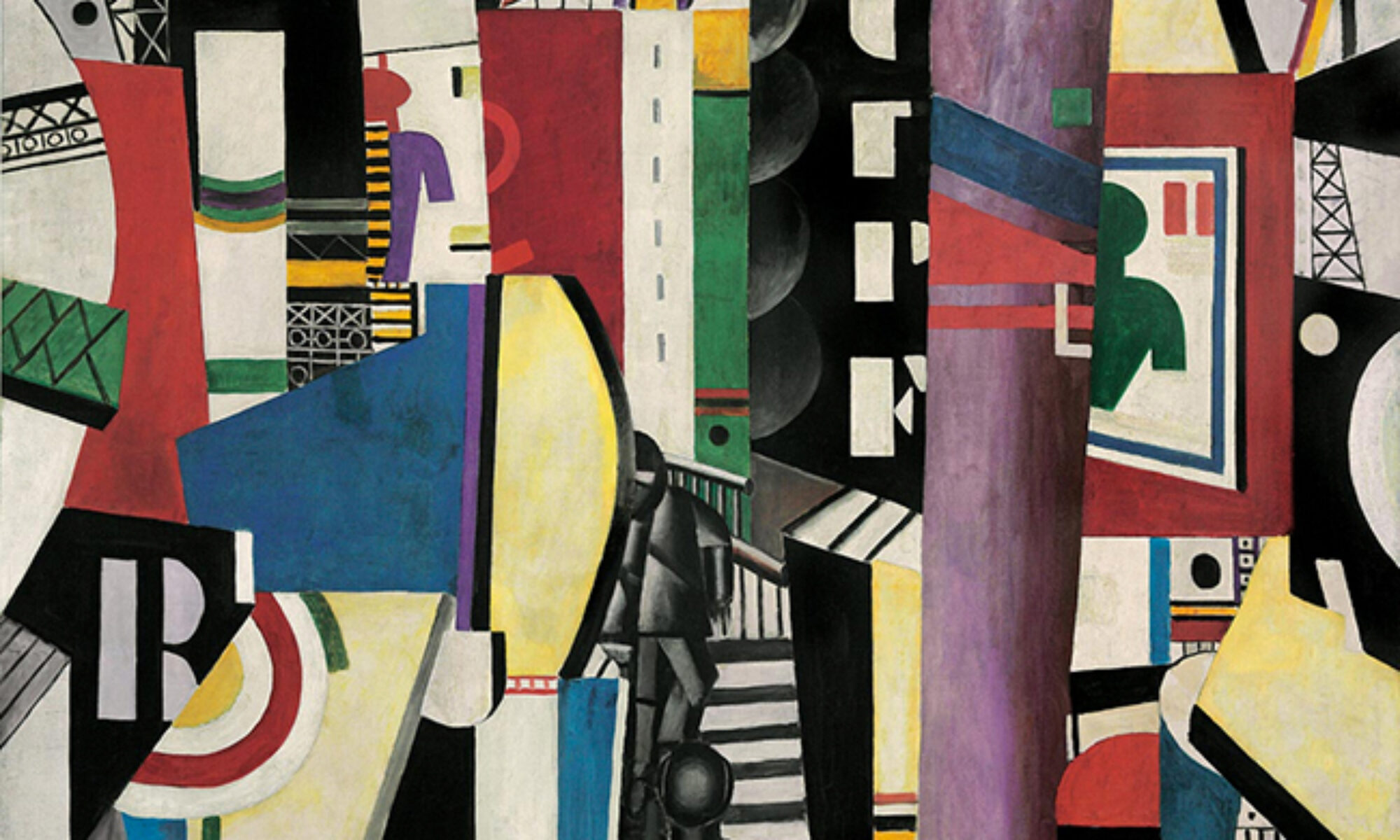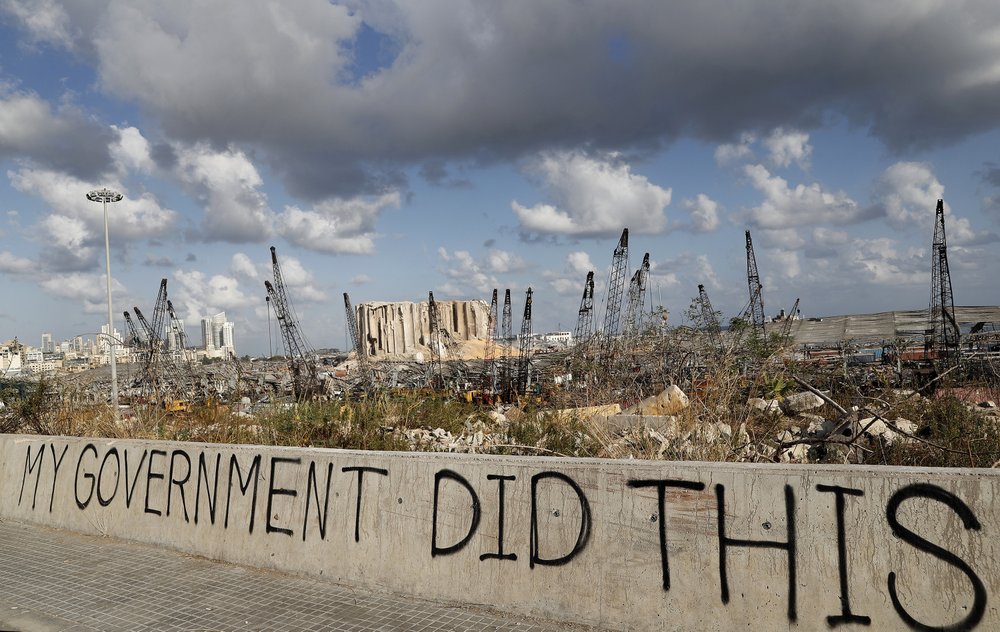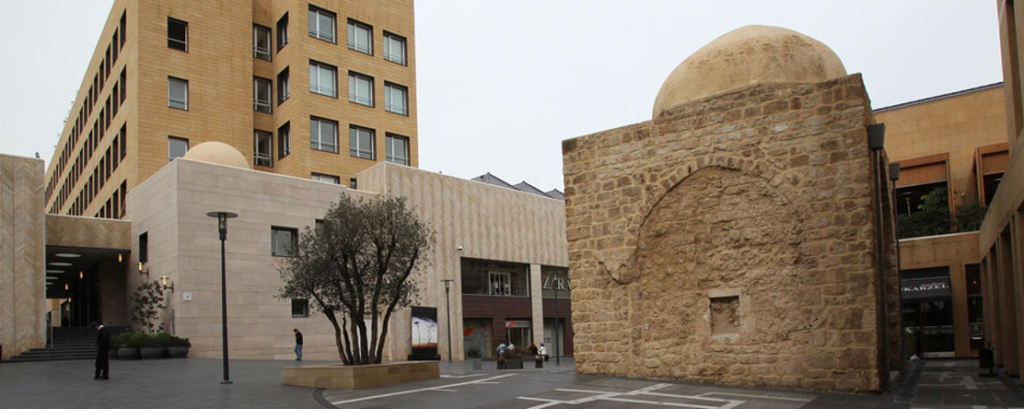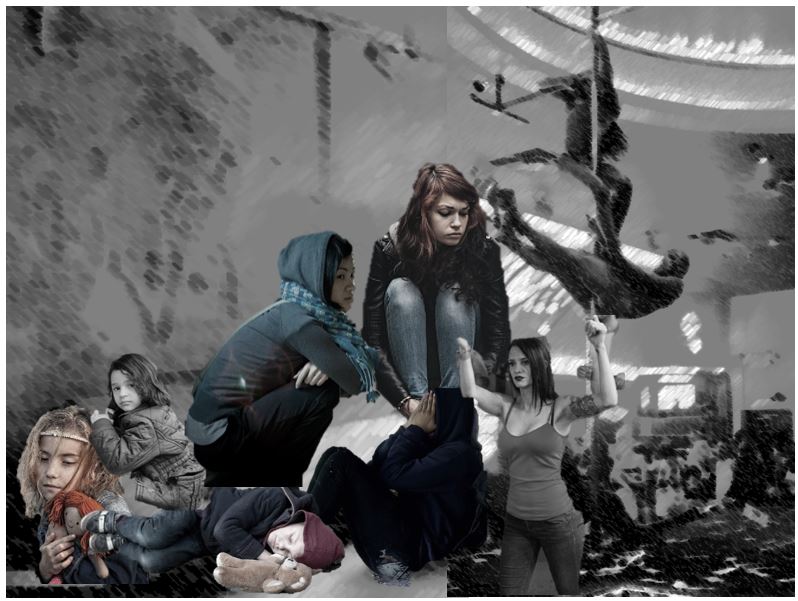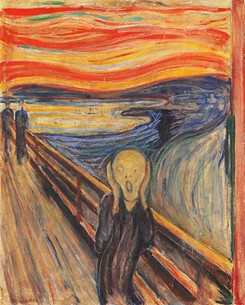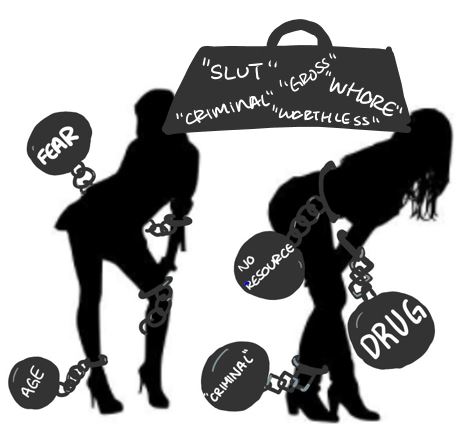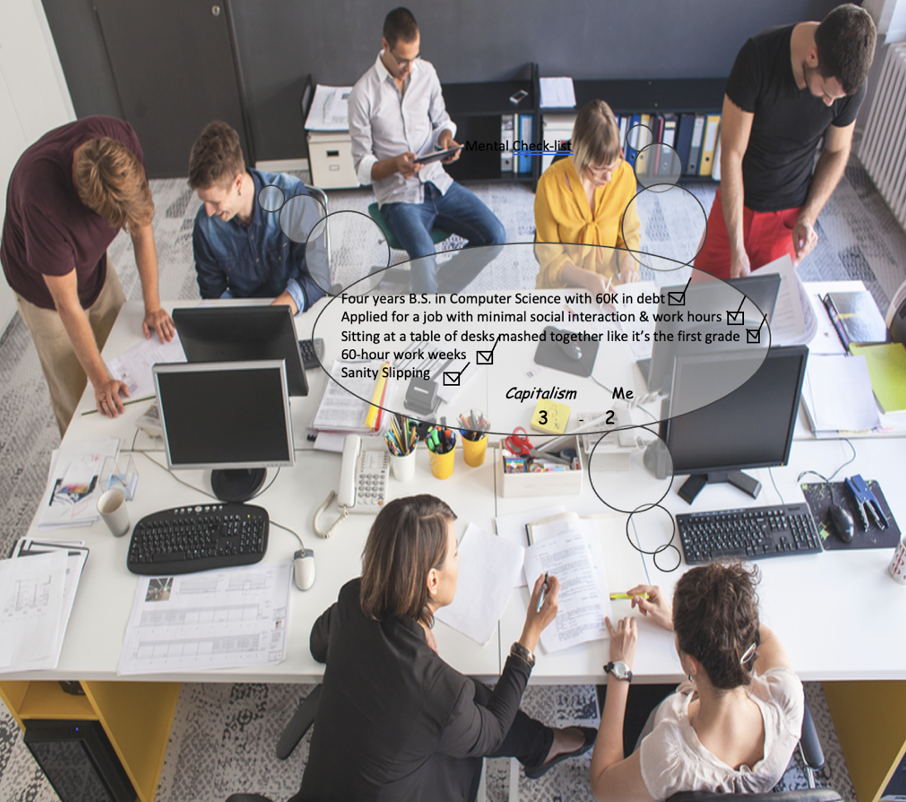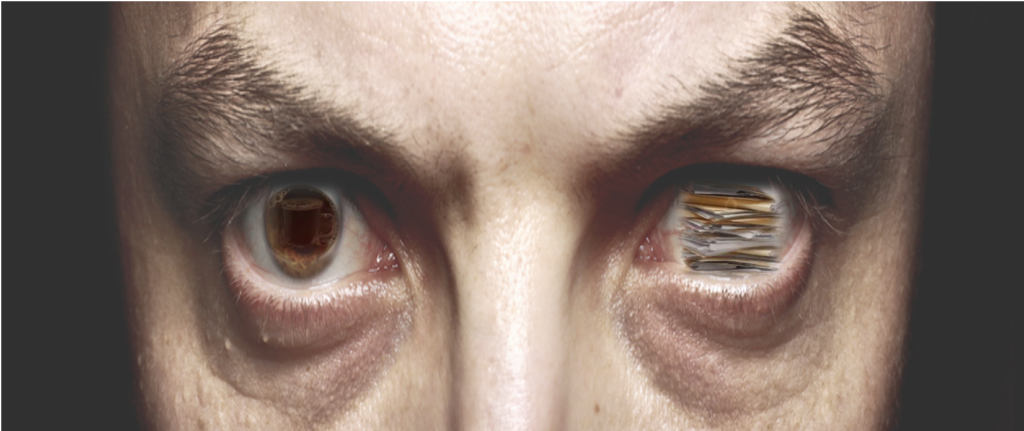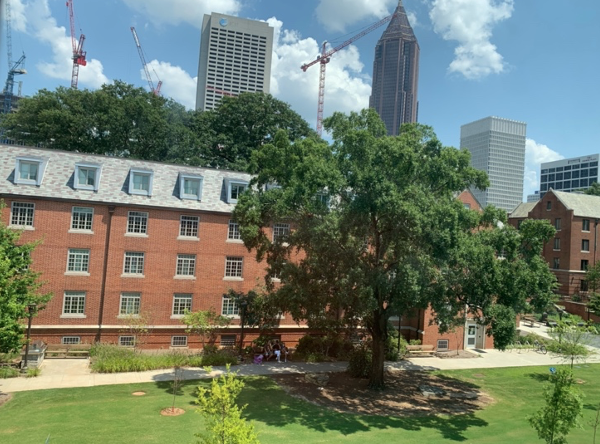By Coley Chapman – 9:30 class
I arrived at Georgia Tech with only one parent, my mask on, and experiencing a totally different city than the class of 2019 did. The looming presence of Covid-19 has changed the way that we interact with each other and how we interact with Atlanta, but beyond that, it has changed the city of Atlanta. The culture and personality of Atlanta is not based on the buildings or landscapes around us, but instead, the city is defined by the complex web of people, interactions, and how they all intersect.
What is Interaction?
Interaction is how everyone affects everyone else. Interactions in Atlanta are the definition of the city, the day-to-day fabric that makes up our perception of our community. The only way to interact with Atlanta is through the people of Atlanta. Even now when people are sparse, we look to identify traces of community wherever we go. The city is empty without the stories of those that interact with it.
Walker Evans is able to depict the connection between a barber and the others in the shop without including any models in his photograph. The building has been lived in and shows the personality of the barber. The newspaper on the wall and the whiskey advertisement remind us that people live and work in this space. When viewing, you feel as though the barber has just left the frame. The haphazardly draped towels from the most recent client or the temporarily placed hat waiting to be picked back up by its owner make it impossible to see this as an empty room. He brings the barber’s chairs into the foreground and includes both of them to convey a sense of companionship between customers. These thrones of conversation remind the viewer of the last time they had a haircut, and the conversation they had with the barber or another patron. You can almost hear the chatter of the imagined clients. The most important part of this photograph is not what is in it, but what you know should be in it. The spaces around Atlanta only develop personality when they are populated.
When Walker Evans took his photo of an Atlanta barbershop, it would have been difficult to get people into the photo because of the photography technology of the time. When I looked to capture the same idea in 2021, I struggled to find subjects for my photo due to Covid-19. The collage above was taken in an empty lecture hall on campus and evokes the same feelings of missing interaction. Each of the photos was taken at a wide aperture in order to create an extremely shallow depth of field and force the audience to focus on the empty chair. By including multiple chairs in each shot, the viewer’s eye follows the paths radiating from the focus point of the photo. As they look away, they realize how many empty chairs are present today and the combination of 3 photos in the collage serves the same purpose. The photos are still, but any student’s immediate reaction is filled with action and excitement, reminiscent of the people they knew. The life of this photo is in contrast to its literal appearance. The room is quite sterile, but you allow yourself to imagine conversation and interaction that fills the space. The focus of this photo is not on the structure, but instead the purpose of these structures – a location to interact and communicate with varied peoples and personalities united by a common goal.
How does Covid – 19 Change Atlanta and Challenge the Modernist City?
Whether they are conversations in the confined space of a barbershop or a large scale gathering in a lecture hall, Covid-19 has limited the capacity or completely eliminated the in person interaction that defines the city as we know it. The mass daily migration of people to the office is no more, and many find themselves limited to their homes. People are still interesting and Atlanta still has culture, but it is near impossible to interact with the city like you once could. What was once a river of people and ideas, intertwined by communication is now segmented into isolated units. The modernist city is built on constant interaction, to the point of anonymity, but now cities face an inability to blend into one. We can however get a sense of oneness in the sum of each independent story and personality within the city. In each unit, there is still a sense of community, even if it is only a part of the larger Atlanta story.
In this photo, I try to capture the community that is omnipresent even in a global pandemic. I used a 200mm lens I borrowed from my dad to get an extremely tight image of a local apartment. Each one of these apartments is filled with its own tenants each with their own lives, but together they still create a homogeneous building facade. People are still communicating with their families and loved ones, but each group is now isolated. Atlanta’s broad culture still exists but is unreachable for the majority of us. Confined to our homes, our reach is shortened to only those next to us, and it becomes impossible to experience a grand city. Unlike the modernist city, Atlanta does not have a homogenizing flow of people anymore, and instead, we are confined to our own vignettes.
Amadeo de Souza Cardoso captures this idea of independent ideas that are proximate yet discrete, utilizing form and color to create two independent emotions in “Windows of a Fisherman”. The left side of the image features a bulbous window and curving strokes, along with a purple tone. The left side feels luxurious and comfortable. In contrast, the right window is jagged and duplicated, indicative of a much different experience than its nearby counterpart. Like Atlanta today, these two ideas are simply existing close to but separate from one another, incapable of blending or bending to create anything new.
How will Atlanta live on?
Because of the decreased frequency of interaction, each intersection of ideas and people has so much more importance. Unlike the modernist city, where every interaction is forgettable, Atlantians in the current climate need to make each intersection mean something more.
These photos were taken at night on 10th Street using a tripod and a 2 second long shutter speed as the cars drove by. I then compiled them on my computer and created this image. With this image, I want to focus the audience’s eye on the middle of the image where all the lines intersect. Even in Covid-19, we see the passing of cars each containing their own tiny community with its own unique story, each intersecting and intertwining together on their journey. The ideal way to view this image is to be taken to the middle but then follow the path back to each of the corners of the image. Much like when we interact with people, we need to focus on who they are and what they come from. Just as important as the interaction and intersection of our lives is the interaction and intersection of their lives.
In the above image, Piet Mondrian creates a grid pattern of independent boxes that intersect uniquely throughout the piece just as the cars’ trajectories intersect on 10th street. As you look from top to bottom, you can see the grays slowly change in minute ways, and see the density of intersections change in different locations. Like how ideas change, the pieces transition in color and form through intersections shared by different boxes. In our lives and in the city, these intersections are the force that transitions our individual experiences into a culture.
What Now?
Going forward, Atlanta will revert back to its pre-2020 sense of community and culture. Covid-19 is only a temporary roadblock for the modernist city. Restaurants are opening back up. You can now go get your haircut. Groups are finding ways to interact online in the meantime. The massive decrease in interaction and intersection we saw last March is slowly dissolving and allowing us to see the city once more.
Until we are back to meaningless and abundant interaction, however, we need to remember that every intersection of our lives with the lives of others is important and valuable. Even in our limited environment, we bear witness to the occasional intersection of discrete lives and stories. Unlike the modernist city, each of these limited crossings of our lives are not anonymous and will be memorable. You are part of what makes Atlanta, Atlanta.
Works Cited
Walker Evans. Barber Shop, Atlanta. 1936, High Museum of Art, Atlanta, GA.
Souza Cardoso, Amadeo de. Windows of a Fisherman. 1915, Calouste Gulbenkian Museum, Lisbon, Portugal.
Mondrian, Piet. Composition with Grid #1. 1918, The Museum of Fine Arts, Houston, TX
